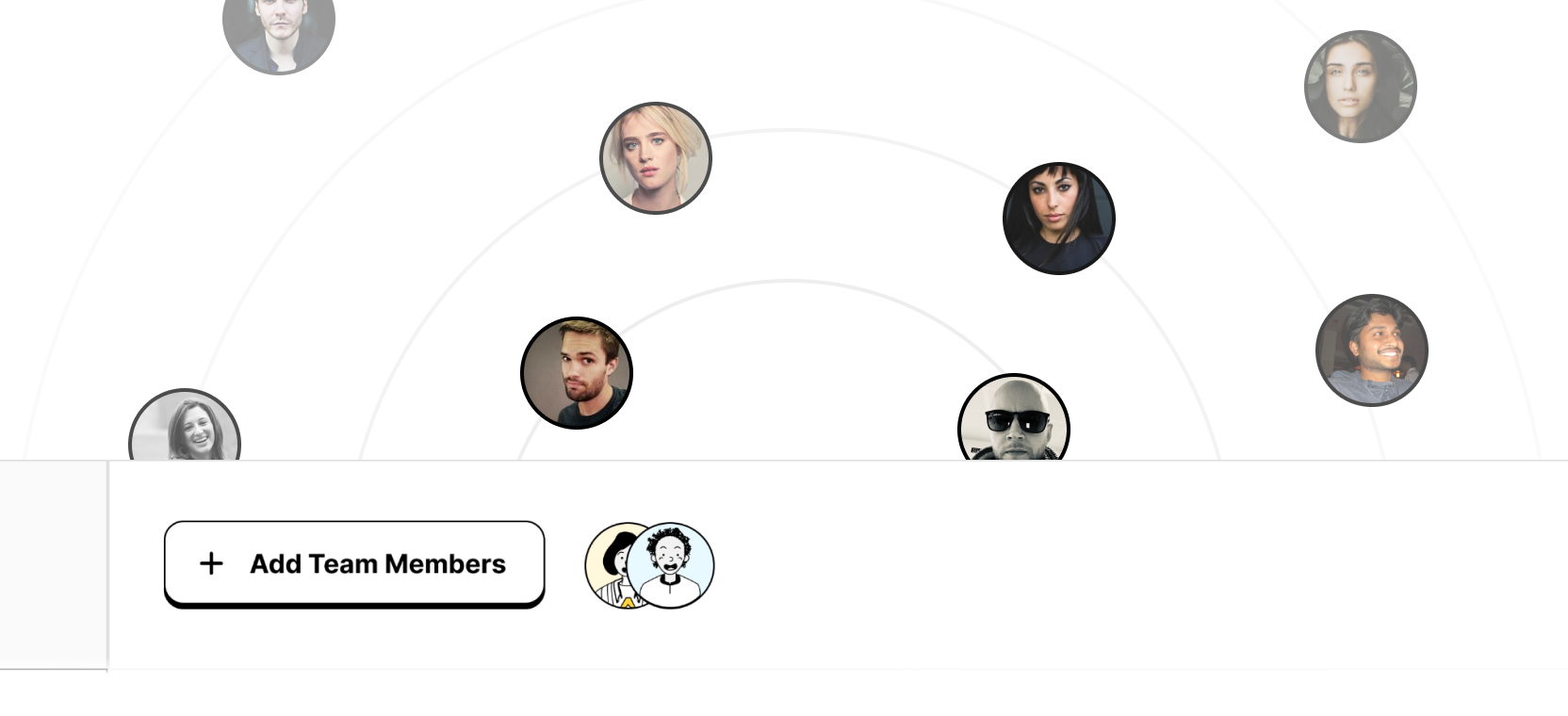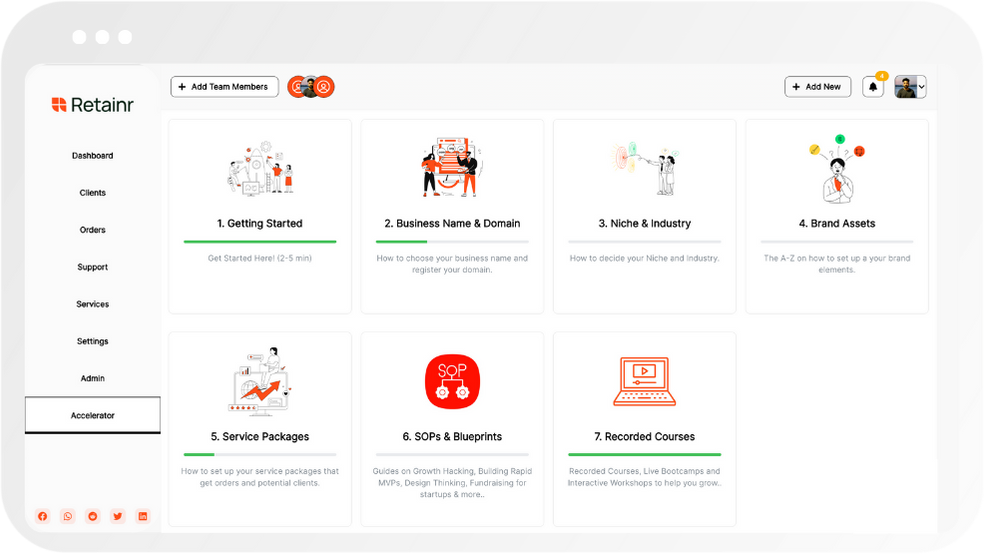
7 Metrics To Analyze Your YouTube Ad Performance
Build with Retainr
Sell your products and services, manage clients, orders, payments, automate your client onboarding and management with your own branded web application.
Get Started1. What are the seven metrics to analyze YouTube ad performance?
Understanding YouTube Ad Performance Metrics
YouTube ad performance is driven by several metrics that provide insightful statistics. These numbers paint a detailed picture about your ad's effectiveness, audience interaction, and conversion potential. It's crucial to understand what these metrics mean and how they can help refine your marketing strategies. The seven important metrics to remember are: Impressions, View rate, Click-through rate (CTR), Video engagement, Watch time, Audience retention, and Cost per view (CPV).
Defining the Key Metrics
- Impressions: This represents the number of times your ad was shown to users.
- View Rate: This is the ratio of views to impressions. It provides insight into how many people saw your ad and chose to engage with it.
- Click-Through Rate (CTR): This is the ratio of clicks on your ad to the number of total impressions. A higher CTR indicates a more effective advertisement.
- Video Engagement: This measures how users interact with your video, including likes, shares, and comments.
- Watch Time: This indicates the total amount of time users spent watching your ad.
- Audience Retention: This shows the percentage of your video that viewers watched before they stopped.
- Cost Per View (CPV): This is the amount you pay each time someone views your ad. Understanding CPV can help allocate your ad budget efficiently.
Visualizing Metrics in a Table
| Metric | Description |
|---|---|
| Impressions | The number of times your ad was shown. |
| View Rate | The ratio of views to impressions. |
| CTR | The ratio of clicks on your ad to the number of total impressions. |
| Video Engagement | How users interacted with your video (likes, shares, comments). |
| Watch Time | The total time users spent watching your ad. |
| Audience Retention | Percentage of your video the viewers watched before they stopped. |
| CPV | The cost each time someone views your ad. |
2. How can I measure the effectiveness of my YouTube ads?
Understanding YouTube Ads Performance Metrics
One of the key ways to measure the effectiveness of your YouTube ads is by analysing crucial metrics that reflect viewer engagement and ad performance. Seven main metrics that can help you achieve this are: views, view rate, watch time, engagement rate, average cost per view (CPV), impressions and Click Through Rate (CTR).
Engagement-Based Metrics
The first three metrics, and the most fundamental ones, include views, view rate and watch time. 'Views' represents the number of times your ad was viewed. 'View rate', on the other hand, shows the percentage of your impressions that turned into views. It is calculated by dividing views by impressions. 'Watch time' indicates the total amount of time that viewers have spent watching your ads. Keep in mind that longer watch times usually signify better viewer engagement and interest. Here is an illustrative table:
| Metric | Description |
|---|---|
| Views | The number of times your ad was viewed |
| View rate | The percentage of your impressions that turned into views |
| Watch time | The total amount of time that viewers have spent watching your ads |
Cost and Reach Metrics
The next important metrics to consider include engagement rate, average cost per view (CPV), impressions and Click Through Rate (CTR). 'Engagement rate' measures how often the viewers interacted with or clicked on elements of your video. 'Average cost per view' calculates the average amount you pay when a viewer watches 30 seconds of your video (or the duration if it's shorter than 30 seconds) or interacts with your video, whichever comes first. 'Impressions' is the number of times your ad appeared to viewers, while 'CTR' is the percentage of impressions that resulted in a click. Below is a summary of these metrics:
| Metric | Description |
|---|---|
| Engagement rate | The frequency of viewers interacting with or clicking on elements of your video |
| Average cost per view | The average cost you pay every time a user watches or interacts with your video ad |
| Impressions | The number of times your ad appeared to viewers |
| CTR | The percentage of the total impressions that resulted in a click |
3. Why is it important to analyze the performance of my YouTube ads?
Importance of Analyzing Your YouTube Ad Performance
Understanding the performance of your YouTube ads is fundamental to maximize the efficiency of your online marketing strategy. By examining crucial metrics and interpreting the data correctly, you can make well-informed decisions that increase the effectiveness of your marketing campaigns and, as a result, improve your return on ad spend.
Insight into ROI
Firstly, analyzing YouTube ad performance allows you to grasp your return on investment (ROI). You can track the leads, conversions, and revenues generated by your ads, thus, identifying which campaigns are worth investing in and which aren’t. Evaluating your ads' performance also enables accurate spending; this is achieved by opting out of non-performing ads while scaling up successful ones.
- Leads generated
- Conversions
- Revenue earned
Improvement of Ad Content and Strategy
Secondly, consistent analysis provides invaluable insights into improving ad content and overall marketing strategy. Metrics such as watch time, viewer retention, and engagement rate give a clearer picture of the audience's preferences. This, in turn, aids in creating more appealing and effective ads in the future. Furthermore, you can also gain a better understanding of the performance of your ads among different demographics, times, and locations, enabling you to fine-tune your targeting strategy.
| Metrics | Description |
|---|---|
| Watch time | The amount of time viewers spend watching your ad |
| Viewer Retention | The percentage of the video your audience watches before clicking away |
| Engagement Rate | Reactions to your ad, including likes, comments, shares, and subscribes |
4. How does the Click-Through-Rate (CTR) metric work in the analysis of YouTube ad performance?
Understanding Click-Through-Rate (CTR) on YouTube
Click-Through-Rate (CTR) is a crucial metric in evaluating the effectiveness of your YouTube advertisement. It indicates the percentage of viewers who clicked on your ad to reach your website or a designated landing page. You compute the CTR by dividing the total number of clicks your ad receives by the total number of times your ad was shown (impressions). The figure is then multiplied by 100 to get your CTR percentage.
Significance of CTR in YouTube Ad Performance
- An elevated CTR frequently signifies a successful combination of targeting and creative aspects, resulting in an advertisement that resonates with your audience.
- If your CTR is low, it may imply that your ad isn't compelling enough or you're not reaching the right audience.
- Improving your CTR can boost the relevance score of your ad, consequently reducing the price you pay per click. Understanding these CTR factors can pave the way for more successful campaigns.
Assessing CTR and its Influence on Ad Costs
A typical table showing the relationship between different CTR percentages and cost-per-click (CPC) might look as follows:
| CTR (%) | CPC ($) |
|---|---|
| 0.5 | 0.20 |
| 1.0 | 0.15 |
| 1.5 | 0.10 |
| 2.0 | 0.08 |
The table above demonstrates a general trend: as CTR increases, the cost per click (CPC) decreases, making advertising more cost-effective. Remember, a successful ad is not only about reaching a broad audience but also about generating engagement and conversions.
5. Can you explain the 'Watch Time' metric in measuring the performance of a Youtube ad?
Understanding 'Watch Time'
The 'Watch Time' metric is a crucial tool that helps you analyze the performance of your YouTube ad. Essentially, it measures the total amount of time that viewers have spent watching your advertisements. This can provide you with an in-depth understanding of how engaging your ads are. The higher the watch time, the more captivating and successful your ads are likely to be. YouTube's algorithm heavily considers watch time when deciding to promote content, so this metric is imperative for ad success.
Analyzing 'Watch Time'
The following are key considerations when analyzing the 'Watch Time' metric:
- Higher watch time generally denotes higher viewer engagement.
- A dramatic drop in watch time can indicate the ad is not resonating well with viewers.
- This metric also gives an insight into how effectively the ad is keeping the viewer's attention.
'Watch Time' Vs 'View Count'
While both 'Watch Time' and 'View Count' are crucial metrics, they provide different insights. An ad might be viewed many times, but if the viewers aren't watching for long, the message might be lost. Here's a simple comparative table between the two:
| Metrics | Description |
|---|---|
| Watch Time | Indicates the total amount of time viewers have spent watching your ad. |
| View Count | Represents the total number of times the ad has been viewed regardless of its duration. |
Therefore, the 'Watch Time' metric provides a more accurate picture of user engagement by showing you how long viewers are actively watching the ad.
6. Is the 'View Rate' an important metric in analyzing YouTube ad performance?
Understanding the Importance of 'View Rate'
One critical YouTube ad performance metric that cannot be overlooked is the 'View Rate'. It is reflective of how many people viewed your ad or engaged with it. View rate also offers an insight into how relevant your ad is to your targeted audience, and how well it grabs the audience's attention. A high view rate indicates your ad's effectiveness in capturing viewers' interests, thus driving them to watch your content.
Components of 'View Rate'
The 'View Rate' consists of several components, each providing important data:
- Impressions: The total number of times your ad was shown.
- Views: The number of times viewers actually watched or interacted with your ad.
- View Rate percentage: Calculated by dividing the Views by Impressions, then multiplying the result by 100. This percentage would help you evaluate the success of your ad in attracting viewers' interests.
'View Rate' Performance Analysis
An analysis table of a generic 'View Rate' would look something like this:
| Impressions | Views | View Rate |
|---|---|---|
| 2000 | 500 | 25% |
| 5000 | 1500 | 30% |
| 10000 | 3500 | 35% |
The table shows that as ad impressions grow, both the number of views and the View Rate are increasing, implying a positive correlation between the frequency of ad display and viewer engagement. Monitoring and optimizing for a better view rate could result in better ad performance and higher audience involvement.
7. How does 'Engagement Rate' impact the analysis of a YouTube ad's performance?
Understanding Engagement Rate
Engagement Rate is a critical metric to measure the performance of a YouTube ad. This metric offers insight into how well your content resonates with your audience. It provides a percentage of viewers who interact with your content by clicking, sharing, commenting, or liking your video.
The primary factors influencing Engagement Rate include:
- Click Through Rate (CTR): The percentage of viewers who click on your ad
- Watch Time: The amount of time viewers spend watching your ad
- Shares: The number of times your ad is shared
- Comments: The number of comments viewers leave on your ad
- Likes: The number of likes your ad gets
The Influence of Engagement Rate on Ad Performance Analysis
A high Engagement Rate indicates that your ad content is appealing and relevant to your audience. This can lead to increased viewer retention and subsequently a higher average view duration. On the other hand, a low Engagement Rate can signal that your content is not resonating with your target audience, leading to lower view times and less effective marketing efforts.
| Engagement Rate | Implication |
|---|---|
| High | Content is appealing and relevant, leading to higher viewer retention and average view duration |
| Low | Content is not resonating with target audience, leading to lower view times and less effective marketing |
Strategies to Optimize Engagement Rate
To enhance the Engagement Rate of your YouTube ad, consider the following strategies:
- Improve the relevancy of your ad content by understanding your audience's interests and preferences
- Increase the attractiveness of your ad by using high-quality images and engaging headlines
- Encourage viewer interaction by featuring calls-to-action
By analyzing and optimizing your Engagement Rate, you can enhance the success and impact of your YouTube ad campaigns.
8. Why should 'Impressions' be taken into account when analyzing my YouTube ad’s performance?
Importance of Impressions in YouTube Ad Performance Analysis
Impressions are integral to the evaluation of your YouTube ad's performance. Impressions refer to the total count of times a YouTube ad is delivered and viewed by users. They offer a comprehensive overview of how wide your content's reach is. Here are some primary reasons why impressions should be taken into account when assessing your YouTube ad's performance:
- Visibility: The number of impressions directly corresponds to your ad's visibility. More impressions indicate that your ad is being served to a large number of viewers.
- Reach: Impressions denote the reach of your ad. A high impression number means that your ad has a wide reach, thereby increasing brand awareness.
- Engagement: Although impressions do not guarantee engagement, higher impressions suggest more opportunities for user engagement, and indirectly higher chances of conversions.
Understanding impressions is not only about knowing the total number. It's also about the ratio of impressions to other key performance metrics. For example, the Click-Through Rate (CTR) which shows the percentage of viewers who clicked on your ad after viewing it and the View Rate which represents the number of views or engagements in relation to impressions.
| Importance | |
|---|---|
| Impressions to Click-Through Rate (CTR) | If your ad has a high number of impressions but a low CTR, this may suggest that while the ad is being viewed by many, few are actually engaging with it. |
| Impressions to View Rate | A low view rate despite high impressions implies that users are seeing your ad but not watching it entirely, signaling room for improvement in your ad's content or targeting. |
9. How to measure 'Video Views' metric and how does it affect YouTube ad analysis?
Understanding the 'Video Views' Metric
The 'Video Views' metric, as the name suggests, provides the total number of times your video advertisement has been viewed on YouTube. It is significant to understand that a 'view' is counted when a viewer purposefully plays your video for a period of 30 seconds or more. Furthermore, if the ad is shorter than 30 seconds, the entire video must be watched for it to be considered a view. This does not include screen views, autoplay, or repeated views.
Measuring 'Video Views'
YouTube provides an analytics dashboard that enables the advertisers to measure their 'Video Views'. Here is a simplified step-by-step guide on how to do this:
- Log in to your YouTube account and navigate to the 'YouTube Studio'.
- On the left pane, click 'Analytics'.
- Choose the 'Reach tab'.
- Expand the 'Impressions and how they led to watch time' card.
- Here, the 'Views' metric will provide the total number of times your video ad has been viewed.
The Impact of 'Video Views' on YouTube Ad Analysis
The 'Video Views' metric holds a significant place in YouTube ad analysis as it offers useful insights into the performance of your advertisement. It can assist in determining how well-received your video content is, and how effectively it attracts and engages viewers. It directly affects the Cost-Per-View (CPV), which denotes the amount an advertiser pays for every video view.
| Performance Level | Video Views Number | Impact on Analysis |
|---|---|---|
| High Performance | High Video Views Number | Low CPV, Effective ad, Attracts and engages viewers |
| Low Performance | Low Video Views Number | High CPV, Less effective ad, Attracts fewer viewers |
Therefore, tracking the 'Video Views' consistently can reveal the effectiveness of the video content, ad placement, targeted audience and overall YouTube ad campaign.
10. Can you provide some tips on how to improve the key metrics for better YouTube ad performance?
Tips to Improve Key Metrics for Better YouTube Ad Performance
Improving the key metrics of your YouTube ad performance not only enhances your visibility but also increases your conversion rates. Here are some effective tips that you can implement:
- Optimize Your Ad Content: Pay close attention to the quality and relevance of your ad content. Ensure your content is engaging, enticing, and provides value to your audience.
- Use Appropriate Keywords: Use relevant keywords in your ad title, description, and tags. It increases the chances of your ad showing up in relevant search results.
- Ensure Effective Targeting: Make use of the advanced targeting options on YouTube. Target your ads based on demographics, interests, and behaviors to reach out to the right audience.
Measuring the Impact of the Improvements
After implementing the above tips, it's crucial to measure impact to understand the effectiveness of your strategies. Keep a close eye on these metrics:
| Metric | Description |
|---|---|
| View Rate | This measures the ratio of views to the number of impressions. |
| Click-through Rate (CTR) | This measures the ratio of users who clicked on your ad to the number of total users who viewed the ad. |
| Conversion Rate | This measures the percentage of users who completed a desired action after clicking on your ad. |
Constant Evaluation and Adjustment
YouTube ad performance metrics provide valuable insights, but they should be used constructively for future campaign planning. Here are a few suggestions:
- Analyze your metrics regularly and identify patterns.
- Use A/B testing to identify which ad content, keywords, or targeting methods work best.
- Don't be afraid to adjust your strategies based on what the data suggests.
Conclusion
Understanding YouTube Ad Performance Metrics
YouTube offers an enormous platform for advertisers, but leveraging it effectively requires understanding of key performance metrics. These crucial indicators include View Rate which measures how often viewers watch your ad, Watch Time which evaluates total view duration, and Engagement indicating user interaction with your ad. Other indicators include Impressions and Impression CTR showcasing number of times your ad was shown and number of clicks it received respectively. Also important is Video Quadrant reporting on how long viewers watched your ad and Earned Actions representing viewer behaviors triggered by your ad such as shares and subscribing to your channel.
Using Retainr.io for Better Ad Management
Keeping an eye on all these metrics can be intimidating, but easy-to-use platforms like Retainr.io streamlines it beautifully. This exceptional white-label software enables you to seamlessly manage your YouTube ad campaigns, track crucial metrics, and organize your clients as well as orders.
The Advantage of Retainr.io
With features like Sell, Manage Clients, Orders & Payments in Your Own Branded App, Retainr.io simplifies ad performance analysis. It lets you get a tangible report of your ad performance, helping you shape your future YouTube ad strategies for maximum ROI.
Master the art of YouTube Advertising with Retainr.io. Benefit from all these features and more, while presenting your clients with seamless, user-friendly service.
Boost Your Agency Growth
with Retainr Accelerator
Uncover secrets, strategies, and exclusive blueprints to take your agency's growth to the next level — from marketing insights to effective presentations and leveraging technology.

SOPs, Cheatsheets & Blueprints
Leverage 50+ SOPs (valued over $10K) offering practical guides, scripts, tools, hacks, templates, and cheat sheets to fast-track your startup's growth.
Connect with fellow entrepreneurs, share experiences, and get expert insights within our exclusive Facebook community.
.jpg)

Join a thriving community of growth hackers. Network, collaborate, and learn from like-minded entrepreneurs on a lifelong journey to success.

Gain expertise with recorded Courses, Live Bootcamps and interactive Workshops on topics like growth hacking, copywriting, no-code funnel building, performance marketing and more, taught by seasoned coaches & industry experts.

.jpg)

.jpeg)


